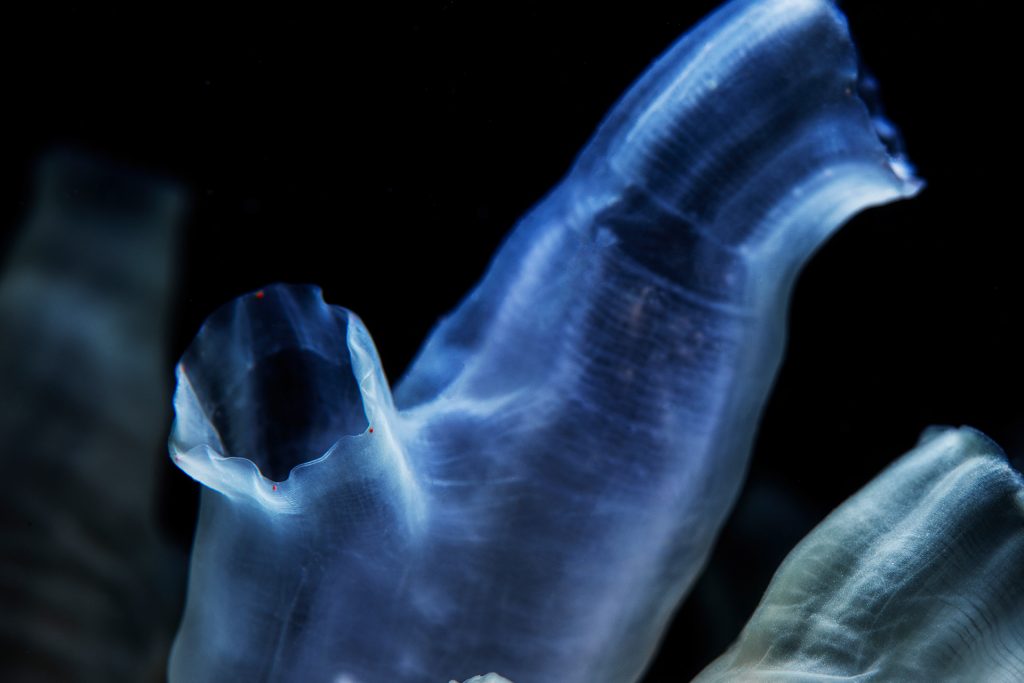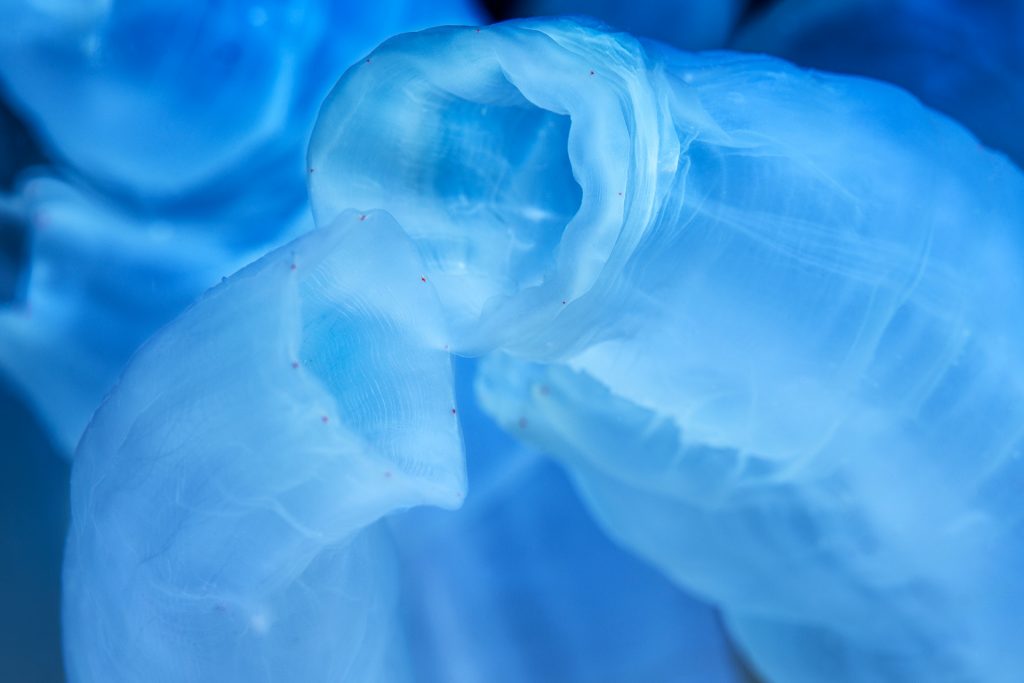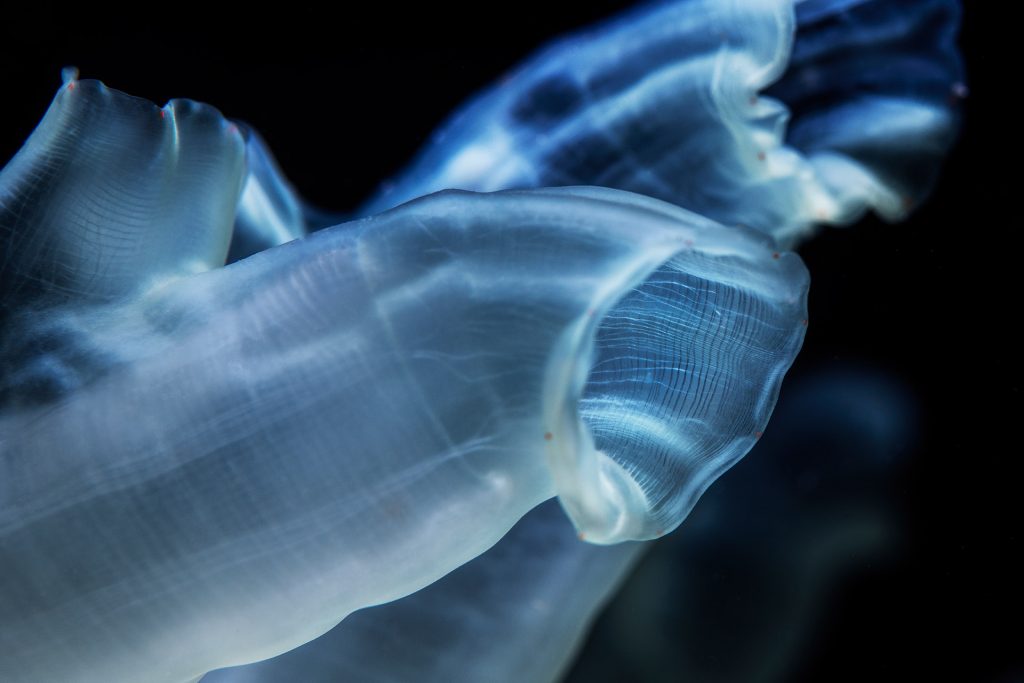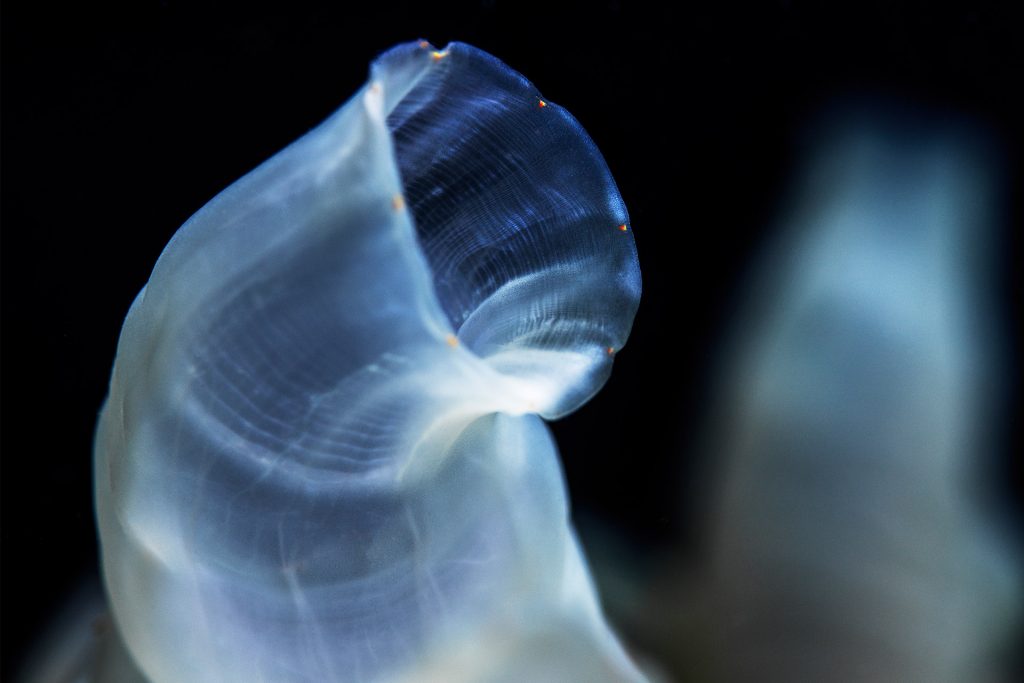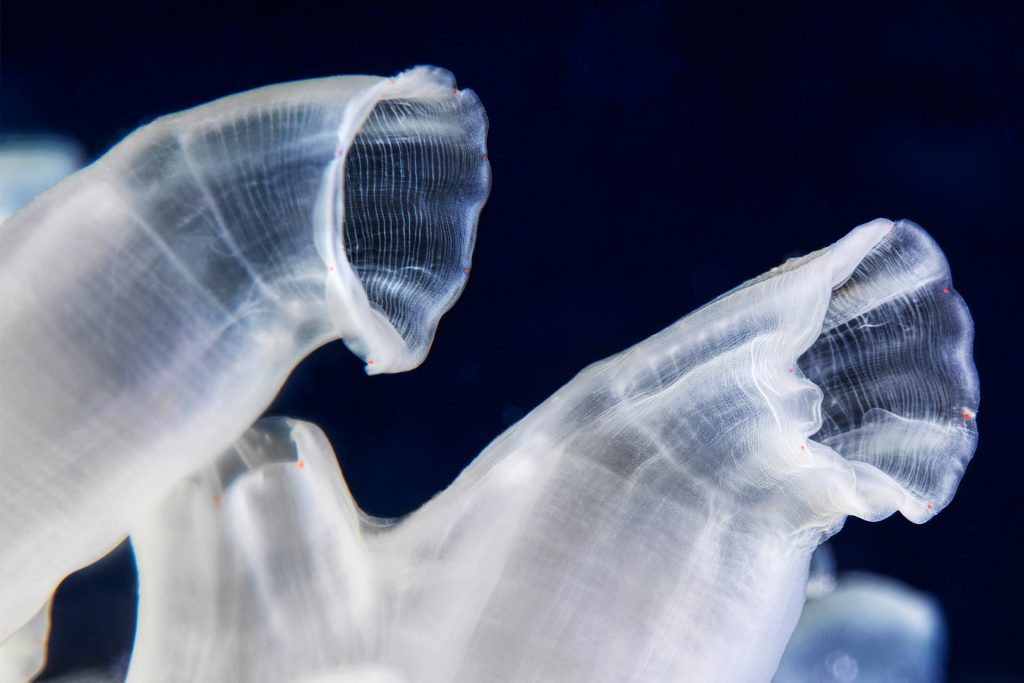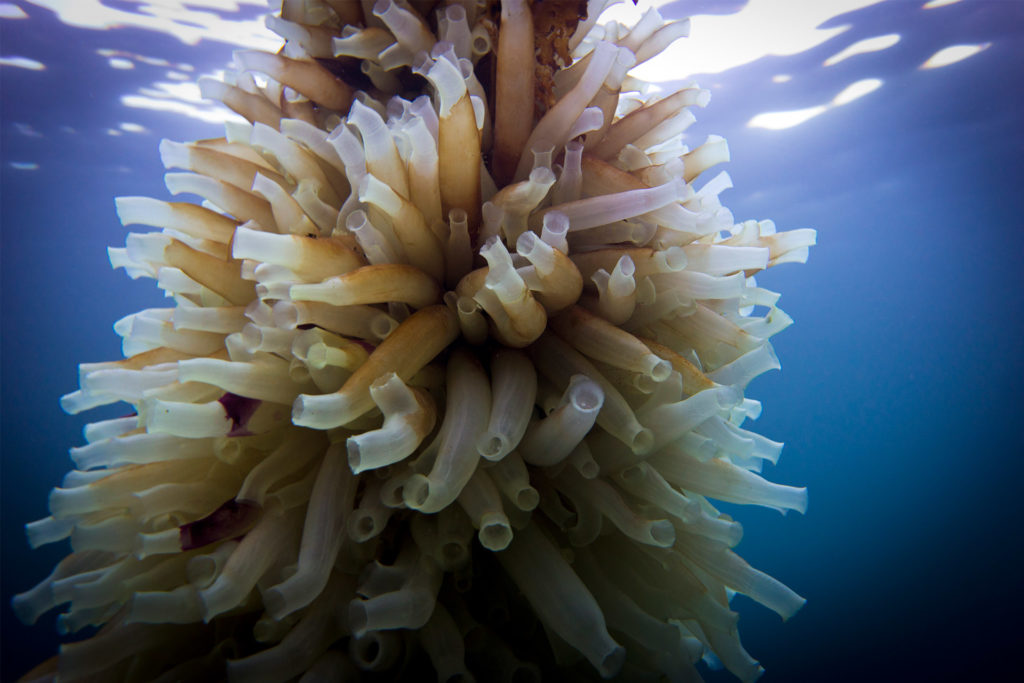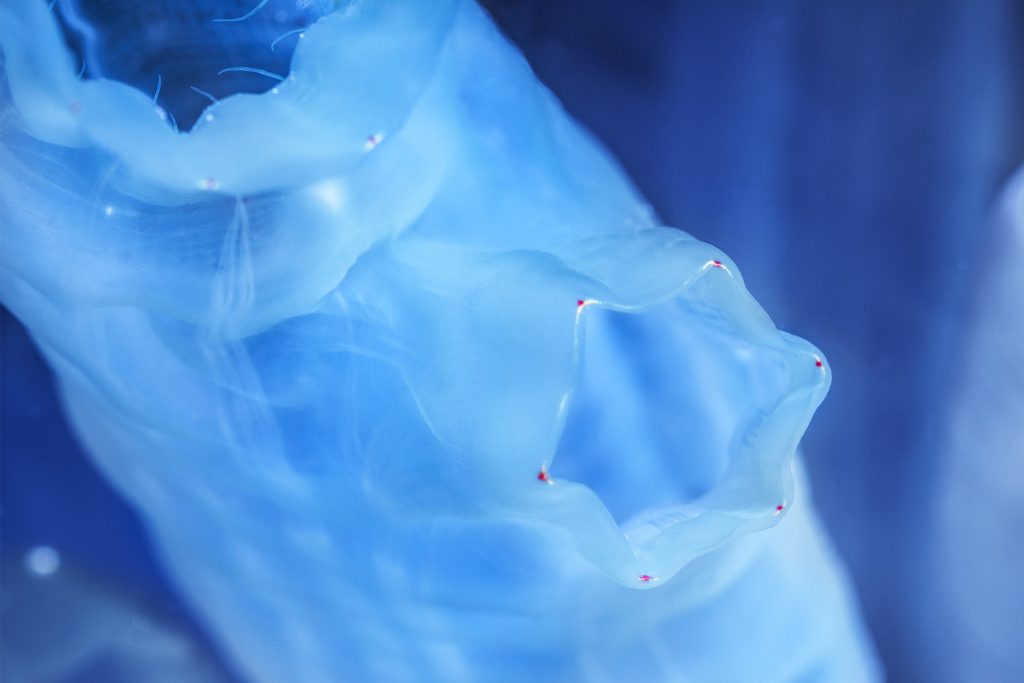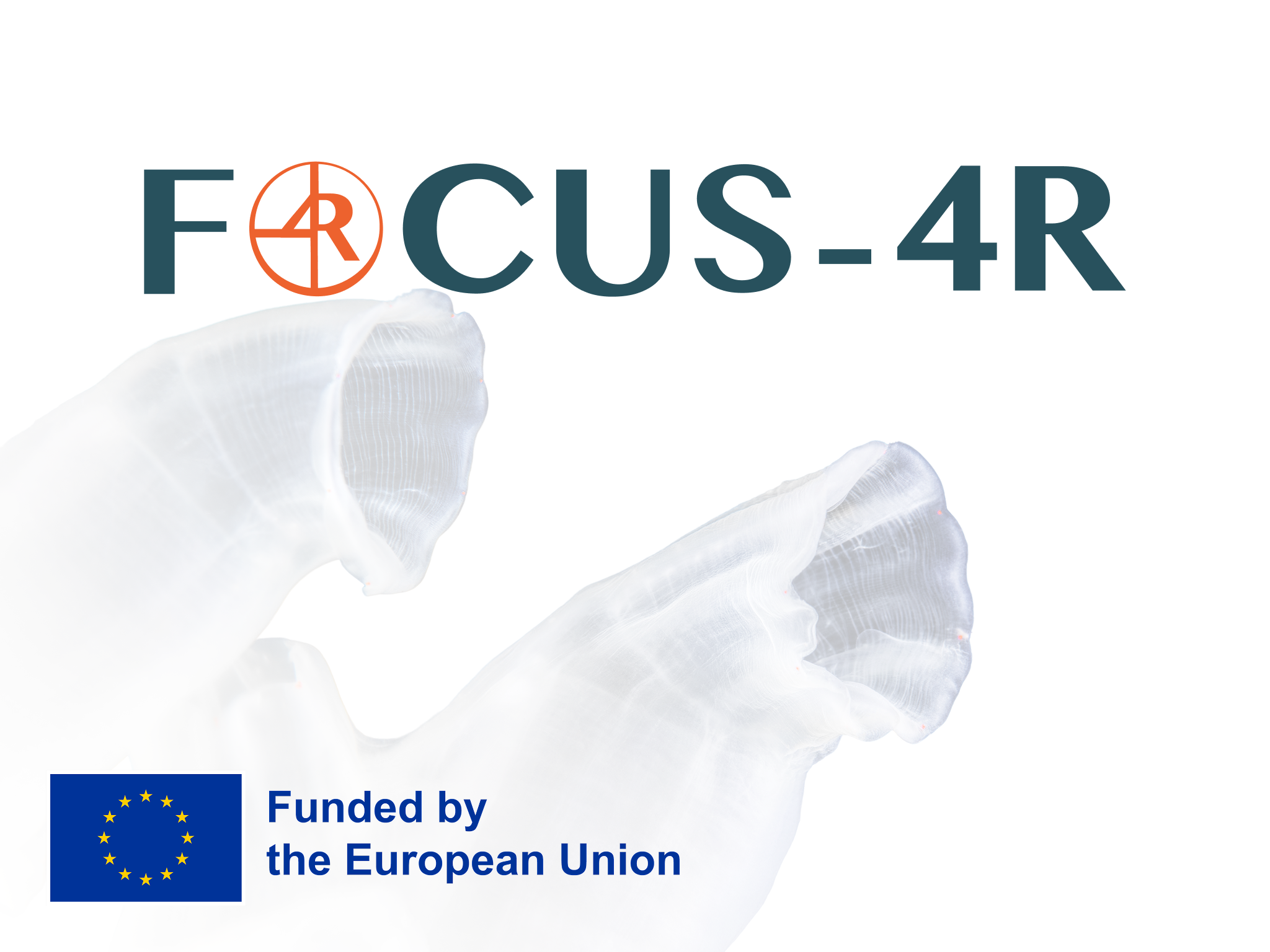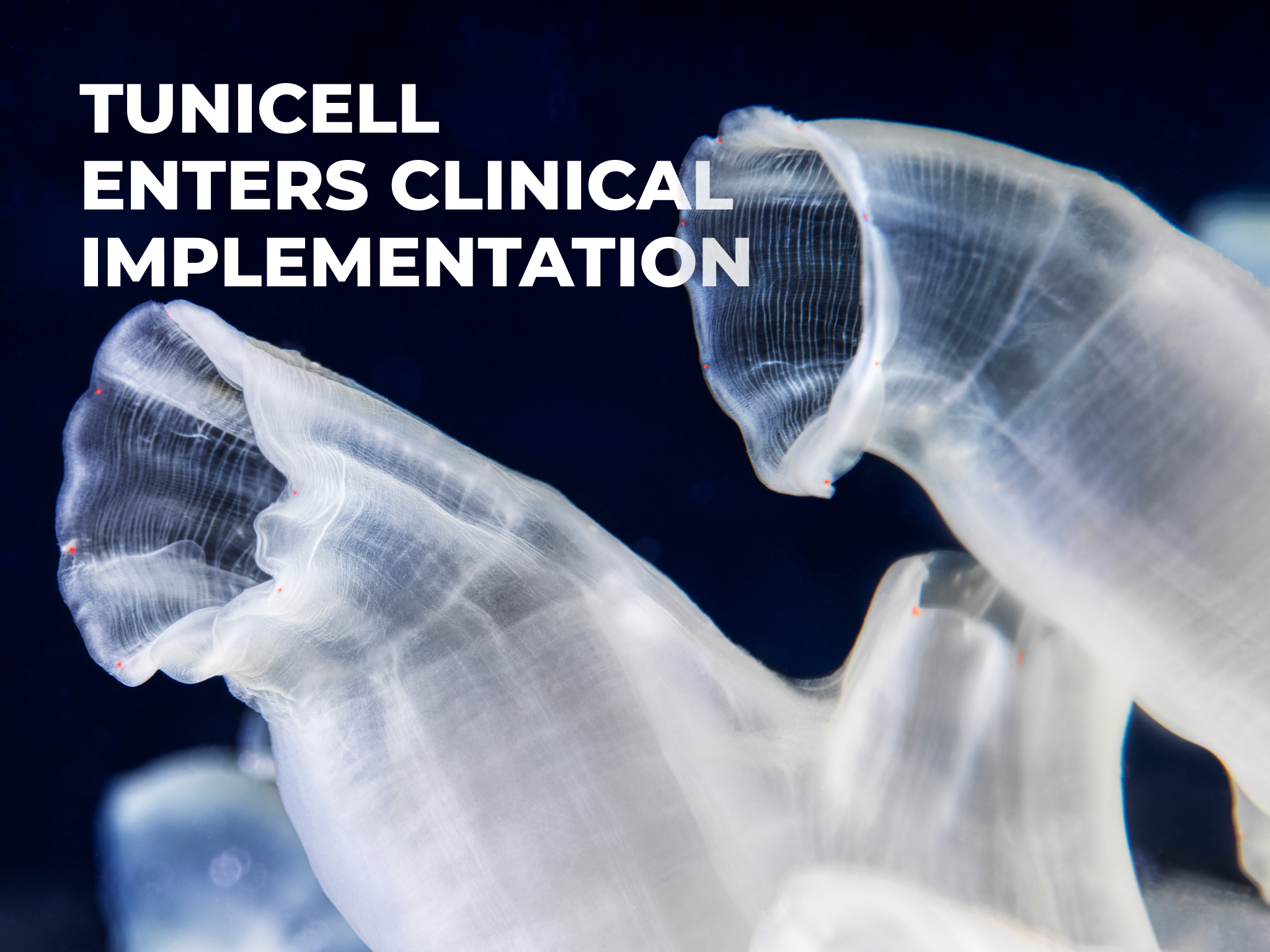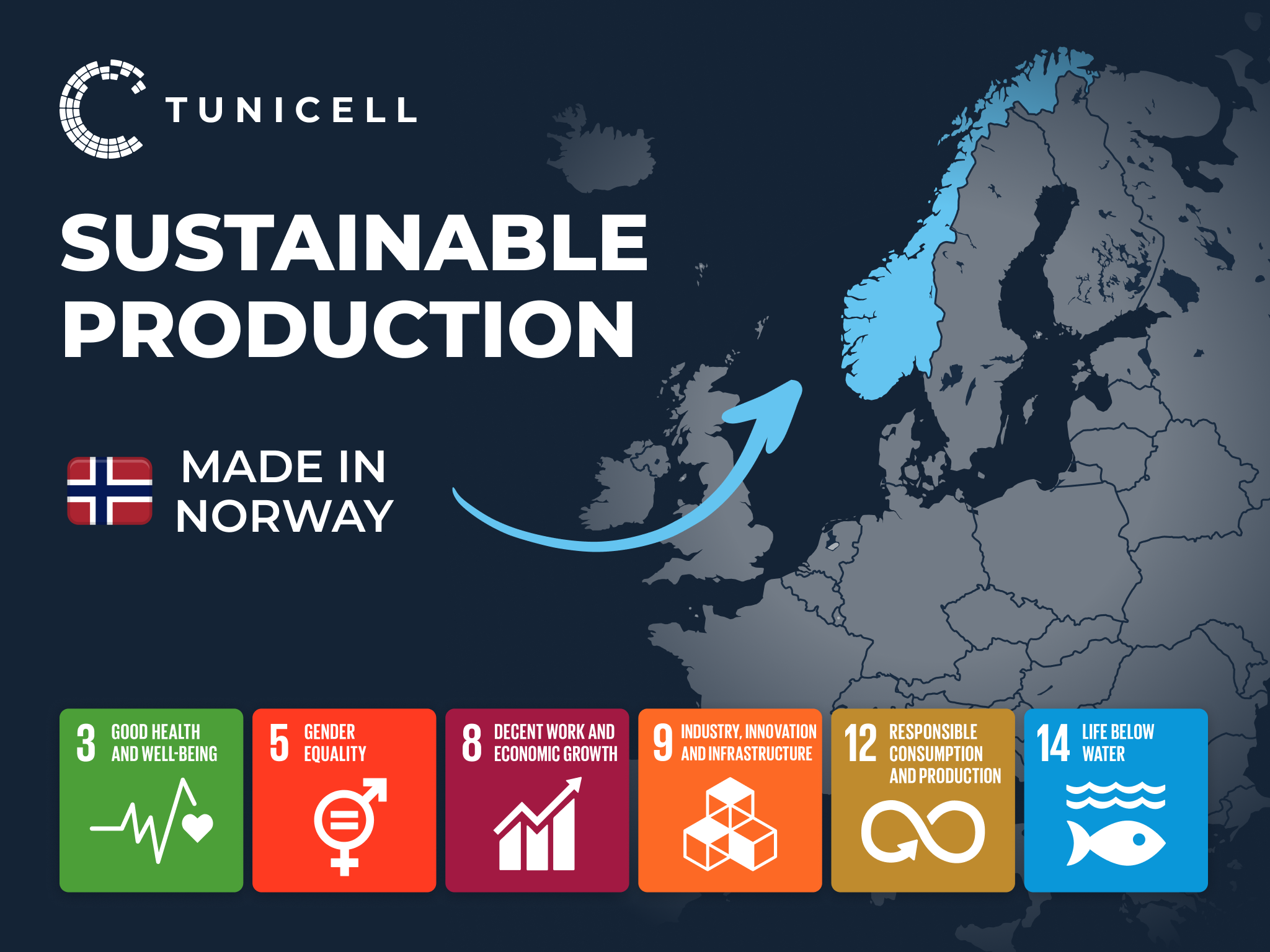Tunicates in the ocean
How it works
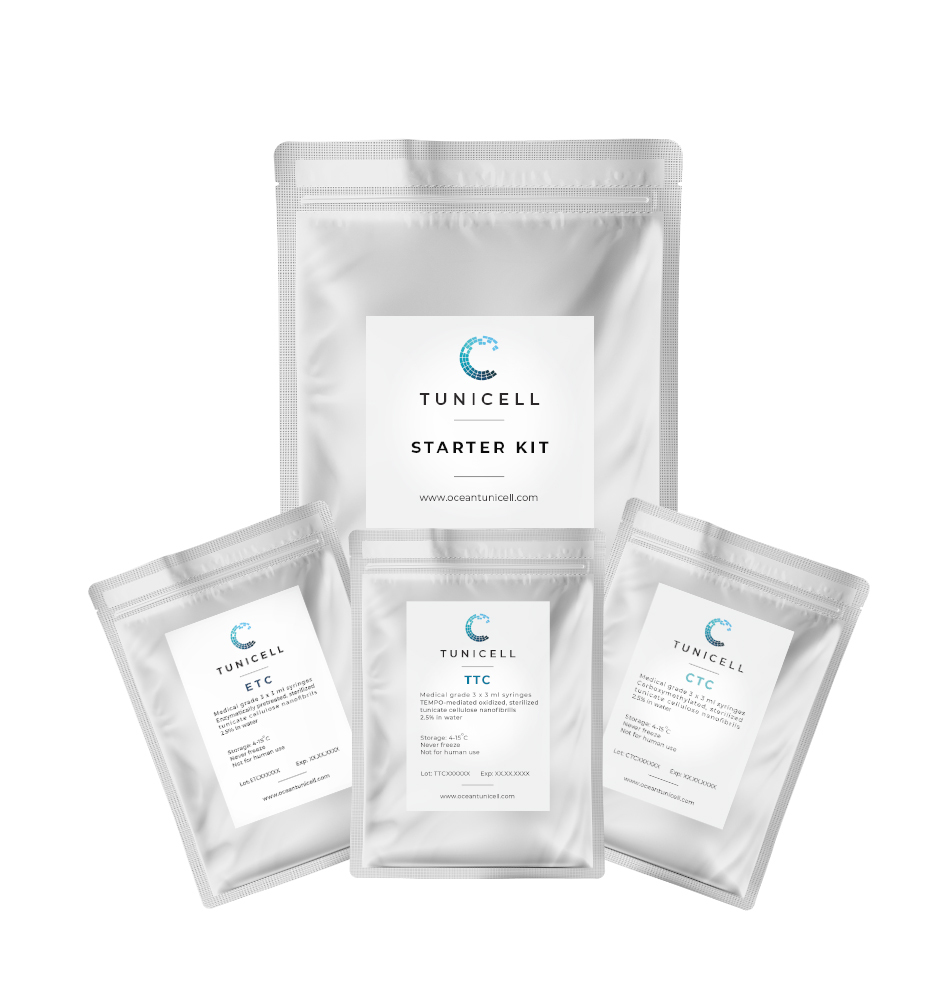
Nanofibrillar Cellulose (NFC)
Discover the benefits
Move the translational process forward and progress your research towards clinical applications. Our nanocellulose has high quality to fulfill the requirements in life sciences and medical applications.
- Batch-to-batch consistent
- Ultrapure and disease-vector free
- Modifiable to your needs
- Room temperature stable
- Non-mammalian & non-vertebrate
- From a sustainable low trophic marine biomass
We are compliant with

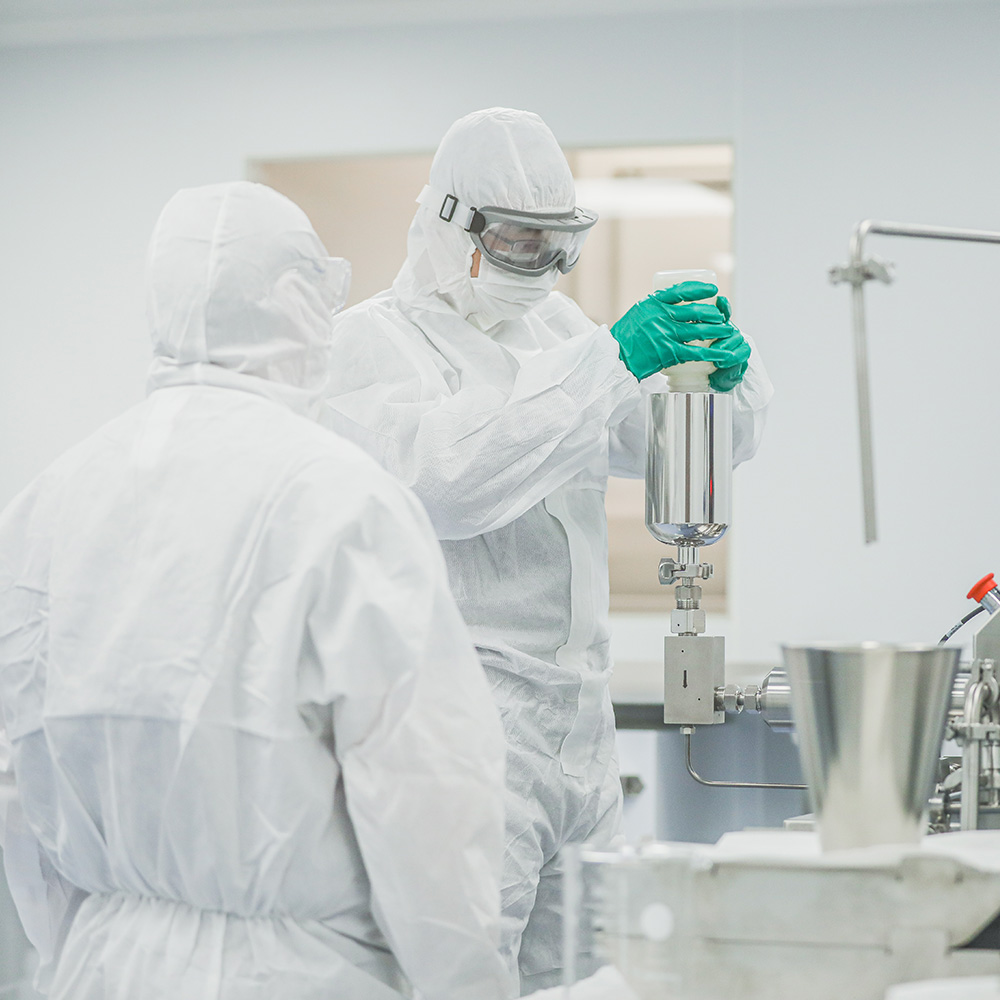
Made in Norway
Valued partners and collaborators
News
A Sustainable
Marine Resource
Tunicates
Tunicates are low trophic, filter-feeding animals at the base of marine food webs.
Tunicates are a diverse group of animals that have both benthic (living on attached substrates) and pelagic (living in the water column) groups. They are the only animals that can synthesize cellulose, likely arising from the horizontal transfer of a prokaryotic cellulose synthase gene at the origin of the tunicate lineage. This means that all tunicates can produce a cellulose biopolymer similar to the one from bacteria. Tunicate cellulose fibrils are advantageous in that they are longer, thicker and have a larger reactive surface area than cellulose fibrils obtained from plant material. These are important structural traits that make composites of tunicate cellulose substantially stronger and will enable a very robust binding with other materials to its surface.
Another important advantage is that since tunicates are supported by surrounding seawater, they do not need the same structural support as plants that remain upright on land. The structural matrix is therefore absent of cross-linking lignin and hemicellulose. This means that tunicate cellulose can easily be extracted at very high and reproducible purity.
The strength of the cellulose fibres coupled to the purity of the fibres makes it particularly interesting for a large range of products, particularly within the field of biomedicine as a scaffold material in organ and tissue reconstruction.
